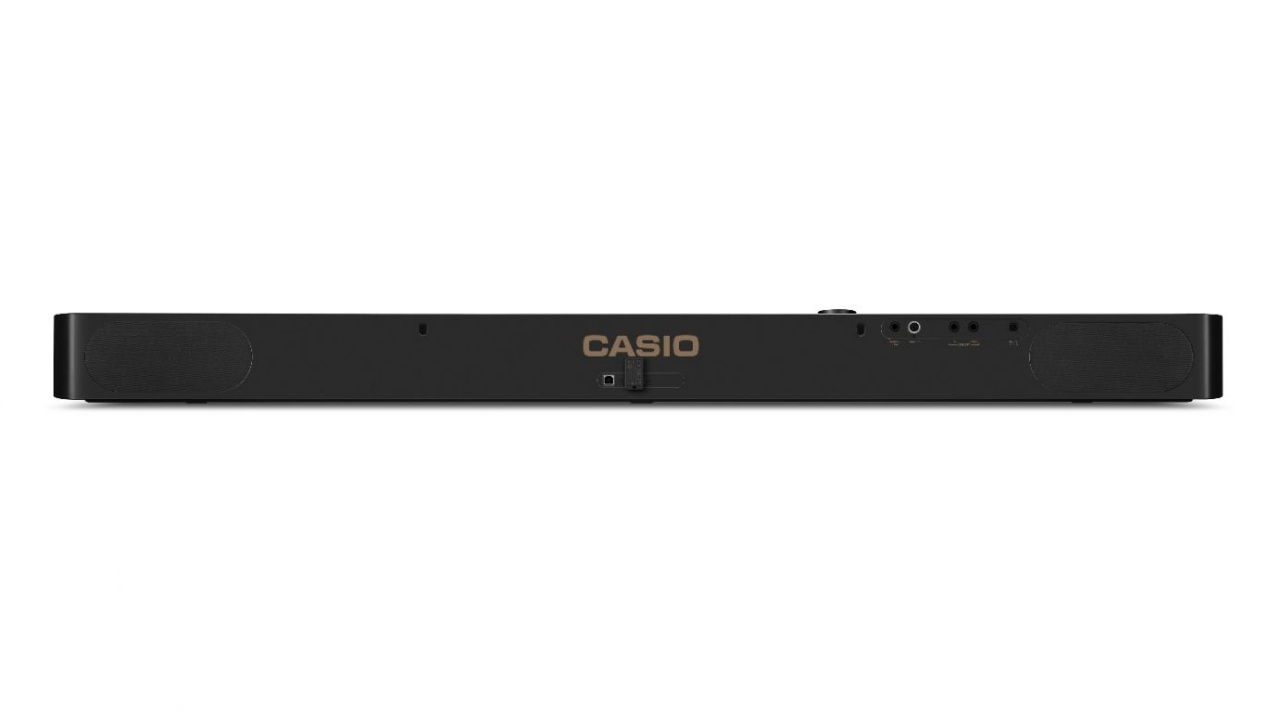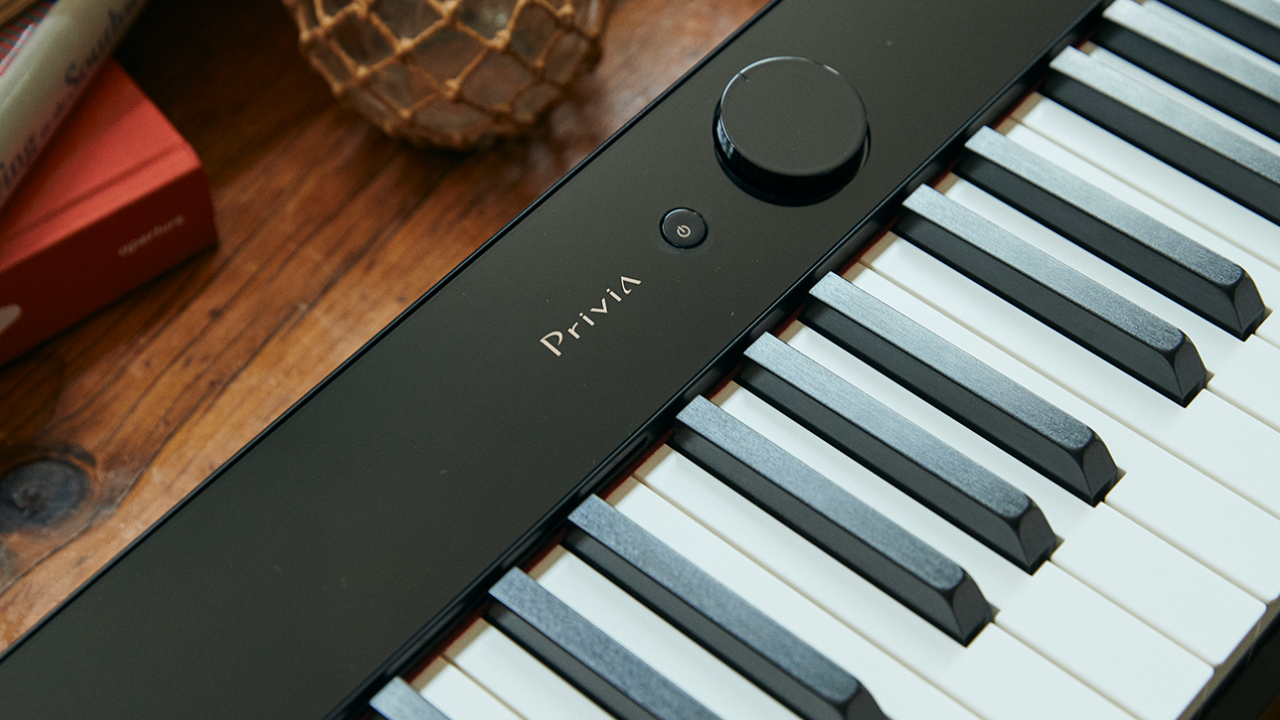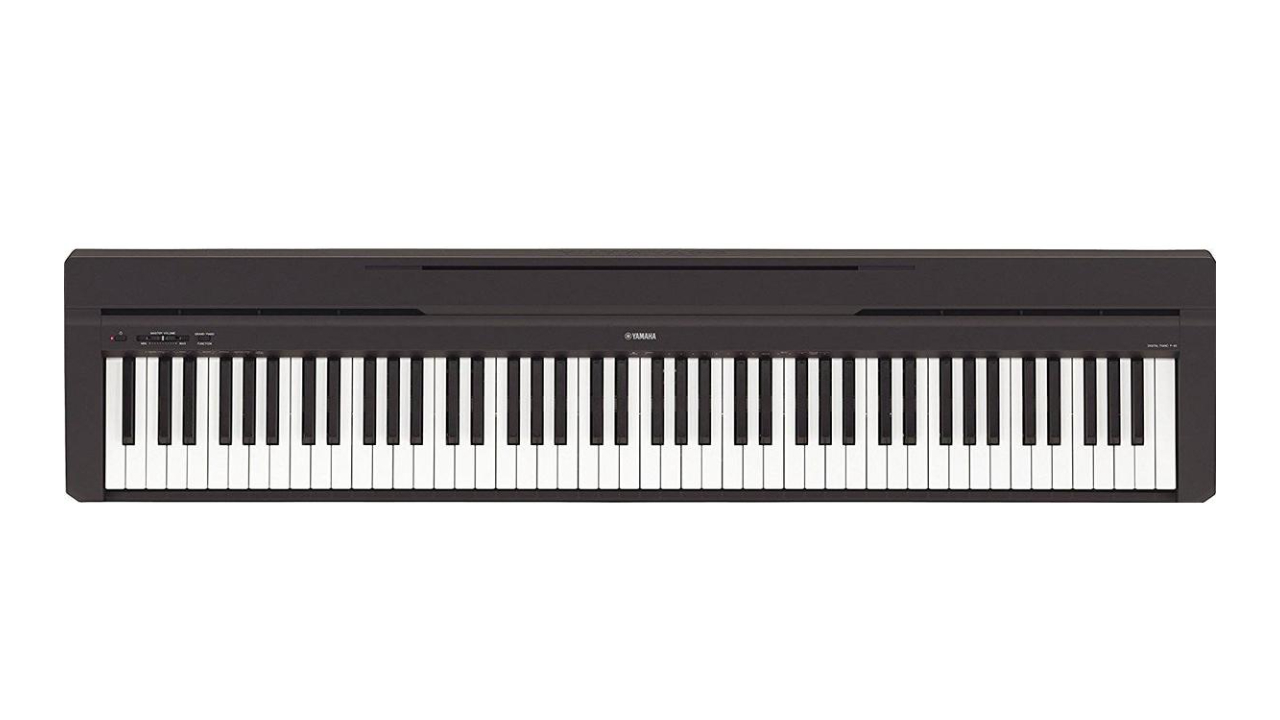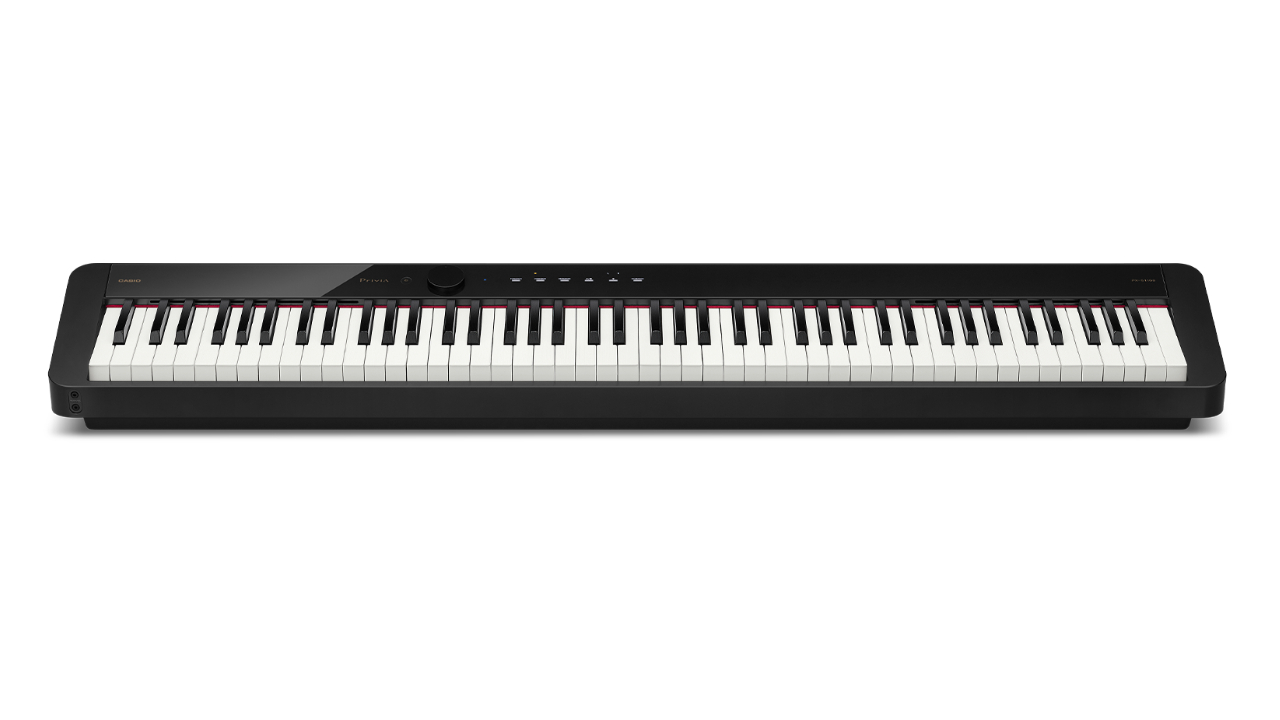MusicRadar Verdict
The new Casio PX-S1100 builds on the previous model and brings it into the modern-day with smart features including Bluetooth audio and MIDI, as well as a fantastic new speaker system that delivers stellar sound at an accessible price point.
Pros
- +
New and improved sound
- +
Light action great for beginners
- +
Sleek look
- +
Bluetooth Audio and MIDI
Cons
- -
Experienced players may find the action too light
MusicRadar's got your back
What is it?
The original PX-S1000 burst onto the scene in early 2019 and was instantly popular among budding pianists - and for good reason. Casio managed to create a sleek stage piano that was incredibly compact and lightweight - and all for a remarkably budget-friendly price. Naturally then, the keys playing community eagerly awaited the release of the Casio PX-S1100, which promised to build on the previous model and bring it up to date with modern features.
Casio states that the new and improved digital piano delivers superior sound quality due to the upgraded 8W speaker system, as well as an enhanced grand piano tone for a greater level of expression. In addition, bringing the Casio into the modern day is the inclusion of Bluetooth audio and MIDI, provided by the WU-BT10 USB adapter, which allows you to connect to your PC, Mac, iOS, or Android device with no need for cables.
Also new for this piano is the USB audio recording feature which, as the name suggests, allows you to capture your performance directly to a USB memory stick and transfer it to your PC. This means you can share recordings with your friends, family or even your piano teacher - with no need for cables or knowledge of recording software - simply plug in a USB stick and away you go.
Although many things have changed, the key action remains the same as the previous iteration, utilising Casio's Smart Scaled Hammer Action Keyboard. This is an 88 note, fully weighted piano, which features a graded key action - meaning each individual key has its own hammer weighting, key resistance and key release time in an effort to provide the most authentic feel possible on a compact stage piano.
- Explore our pick of the best Casio keyboards
Performance & verdict


Casio PX-S1100: Sound
So, we suppose the big question has to be - is the new Casio PX-S1100 a marked improvement over its predecessor? In a word - yes. The newly reimagined 8W speaker system is doing a lot of the heavy lifting here, providing a clear and punchy sound that is surprisingly loud - even maxed out, there is no discernible distortion. The bass response is most impressive, especially when you consider how small the cabinet is. We wouldn't say the old model sounded bad. In fact, it was quite a nice sounding piano, but this new version certainly delivers a richer tone overall.
Casio has redesigned the main grand piano voice, and it sounds great. Let's face it, if you are buying this piano, then you are going to be spending most of your time on this setting, so it's nice to see Casio take the time to upgrade it. The tone feels responsive and dynamic, meaning it's rather satisfying to play. The other styles, such as the E. Piano, Organ and Strings are a pretty standard affair. Each sound is more than serviceable, with most of them more than capable of getting through a varied wedding or function gig.
Casio PX-S1100: Feel
So, we have established the S-1100 sounds the part, but how does it feel to play? Well, as mentioned earlier, this contemporary beginner digital piano uses the same keybed as the previous model, meaning it feels exactly the same. Casio is known for a light, beginner-friendly action, and the PX range is no different. This piano feels fairly responsive and, for the most part, is comfortable to play. The softer nature of the action will most definitely appeal to the aspiring pianist or those who find heavier keys difficult to navigate. That said, more experienced players may find the action a little sub-par and may want to seek out a piano with a more authentic feel. The inclusion of graded weighting - meaning each key is weighted differently - is a nice touch here. Still, we must admit, it is rather subtle, and most new players won't notice it.
Want all the hottest music and gear news, reviews, deals, features and more, direct to your inbox? Sign up here.
The keys themselves have what Casio call a simulated ebony and ivory texture, leading to a more upmarket feel. This porous texture does help with the overall playing experience. While newbie pianists may not notice it, they would certainly miss it if it wasn't present.

Casio PX-S1100: Features
It seems that Bluetooth audio and MIDI are a given these days, with most digital pianos having the ability to hook up to a smart device baked right in. This was a sorely missed feature on the previous model, so it's nice to see Casio add the functionality here.
The Bluetooth audio streaming and wireless MIDI capabilities come courtesy of the WU-BT10 USB adapter, which is included in the box. Having the ability to connect the piano to a smart device will revolutionise your practice routine, allowing you to take advantage of multiple online piano lessons, as well as play along with your favourite songs. That said, we can't help but wonder why this functionality couldn't have been built directly into the unit, foregoing the need for an external adapter. Admittedly this is a minor complaint, but something we'd like to see rectified on the next iteration.
With no recording software knowledge, you can record your performances and listen to them back to track your progress
Another feature that seems to be commonplace among digital pianos, which has been added to this model, is the ability to record directly to a USB memory stick. This is an invaluable feature all budding pianists should take advantage of. With no recording software knowledge, you can record your performances and listen to them back to track your progress, impress your friends and family, or even share your practice routine with your piano teacher.
As you'd expect from a portable digital piano, you get a sustain pedal included in the box. Like all pianos at this price point, the pedal is more than serviceable for young players just starting out. Still, as you progress, you'll most likely want to upgrade to a more sophisticated pedal. Casio does give you the option to upgrade to the CS-68 stand and SP-34 three-pedal unit, which will turn the S1100 into an instrument more akin to the Casio PX-770.
- Our pick of the best digital pianos under $1,000/£1,000
Casio PX-S1100: Look

Yamaha P-45: This well built, highly playable stage piano offers fantastic value for money and is worth considering if you are looking for a heavier action.
Roland GO:Piano 88: For those looking for a highly portable option, with semi-weighted keys, then look no further than this Roland.
Lastly, let's talk about the look of the new Casio PX-S1100. There have been a few very minor tweaks to the overall aesthetic, with Casio favouring subtlety this time around. Gone is the large Privia logo which once graced the rear of the unit, leading to a sleeker, more professional appearance - something we very much appreciate.
We also have a more streamlined touch-activated display on the top panel of the instrument, resulting in a cleaner, less cluttered feel. But, of course, all the features previously found on the older model are still just as easy to access, so don't worry about that - we just have fewer unnecessary buttons.
The one word to describe the appearance of the S1100 is sleek. The glossy finish and subtle display result in a rather handsome looking piano that is modern and contemporary. The inclusion of red felt at the bed of the keys is a nice extra touch that makes this entry-level piano feel more premium, and it's this level of attention to detail we really enjoy.
Hands-on demos
MusicRadar
Jeremy See
Casio
Specifications
- Number of Keys: 88
- Key Action: Smart Scaled Hammer Action Keyboard
- Touch Response: 5 sensitivity levels, off
- 88-Key Digital Scaling: Yes
- Hammer Response: Yes
- Key-Off Response: Yes
- Polyphony (maximum): 192
- Number of Built-in Tones: 18
- Sound Source: Multi-Dimensional Morphing AiR
- Connection to App: Chordana Play for Piano ver.2.4
- Bluetooth: Wireless MIDI & Audio Adaptor (WU-BT10) included
- Bluetooth MIDI: GATT (MIDI over Bluetooth® Low Energy)
- Audio Recorder / Playback: Max. 99 songs, approximately 25 min/song
- Connections: PHONES / OUTPUT, PHONES 2 (Stereo mini jack) Pedals 1 (Damper), Connector for 3-Pedal Unit, LINE OUT 2 L/MONO R (Standard jack) USB Type A, USB Type B
- Speakers: 8W + 8W
- Dimensions: 1,322 x 232 x 102 mm
- Weight: 11.2 kg
- Contact: Casio

I'm a Senior Deals Writer at MusicRadar, and I'm responsible for writing and maintaining buyer's guides on the site. As part of my role, I also scour the internet for the best deals I can find on gear and get hands-on with the products for reviews. My gear reviews have been published in prominent publications, including Total Guitar, Guitarist, and Future Music, as well as Guitar World.com. I've also had the privilege of interviewing everyone from Slash to Yungblud, as well as members of Sum 41, Foo Fighters, The Offspring, and many more.
In a previous life, I worked in music retail, selling everything from digital pianos to electric guitars. I'm also a fully qualified sound engineer who holds a first-class Bachelor's degree in Creative Sound Production from the University of Abertay.


